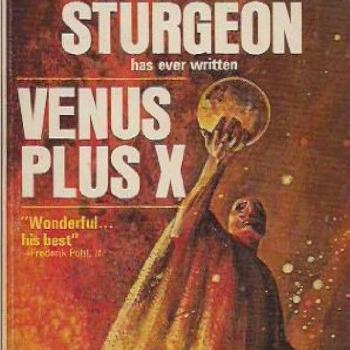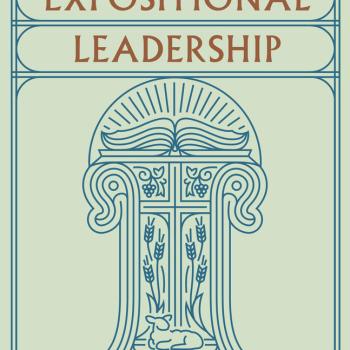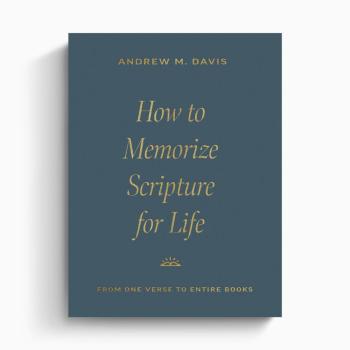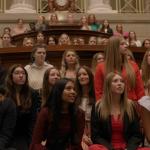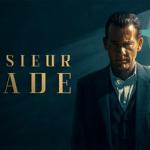Review of The Spirit of Early Christian Thought by Robert Louis Wilken
This is the fifth installment of Reading Patristics–a review series dedicated to books about the early church fathers. These reviews will not be exhaustive summaries, but instead are meant to pique the interest of readers to pursue reading in this area of study and a guide to good books in the field. Previous installments: Classical Christian Doctrine, Retrieving Nicaea, The Theology of Augustine, and The Christians as the Romans Saw Them.

Evangelical Christians tend not to be familiar with the Early Church. While there are many reasons for this (not least as a result of the “no creed but the Bible” movements of the 19th century—see Nathan Hatch for more on that), there are many more reasons we should seek to correct this lack in our spiritual lives. If you have been meaning to do just that (and you should be), The Spirit of Early Christian Thought by Robert Louis Wilken is unfortunately not the place to start.
Overall, as we would expect from a Wilken book, The Spirit of Early Christian Thought is well-written, thoughtful, and engaging. Wilken touches on a wide variety of authors and ideas from the first millennium of Christian history—in a sense, this is the philosophical and devotional version of Wilken’s latest historical work The First Thousand Years (a newer book which comes Carl Trueman approved). Many of the chapters are good introductions to various topics central to the early church. For example, chapter 8 (“Happy the People Whose God Is the Lord”), a survey of Augustine’s City of God, is so good that I will undoubtedly crib from it the next time I teach that particular book (apologies to Dr. Wilken). Wilken writes:
The City of God, then, is not the defense of an idea or a set of beliefs, … but rather a defense of a community that occupies space and exists in time, an ordered, purposeful gathering of human beings with a distinctive way of life, institutions, laws, beliefs, memory, and form of worship. The most characteristic feature of the city of God is that it worships the one true God. (191)
Likewise the chapter on Christian poetry in the early church (chapter 9, “The Glorious Deeds of Christ”) is useful and fascinating, and adds a level of depth to the discussion of Christian fiction and the use of “worldly” genres and modes of thought in the intellectual Christian life. Wilken highlights the poetry of Prudentius, who (so far as we know) was the first great Christian artist, and the first to put Christian life and theology into verse for use outside of a church service (there had been Christian hymn writers prior to his time, but no great poets).
Probably most important is the last chapter, “The Knowledge of Sensuous Intelligence.” In this chapter, Wilken points out that for all of the early Christian thinkers, love and knowledge are inseparable. That is, in contrast to the dominant Stoic philosophy of the ancient world which would suppress passion in favor of reason, Christian thinkers understood that the emotional life and the rational life build upon each other.
For the knowledge that brings happiness is ours only in love. Unlike knowledge from a distance, for example, observing an object in the world, the knowledge of God, says Origen, is “fellowship with God through Christ.” (292)
We cannot have true knowledge of God if we do not love Him, and we cannot love an unknowable abstraction. Rather, we know and love the personal God who has revealed Himself to us in the person of Jesus Christ, who lived in a specific time and place, died on a cross as a payment for our sin, and rose again from the dead. Those are historical facts, but they are facts which must affect us. The church fathers knew this, and we can learn much about how to pursue the Christian life from their example.
With all of that said, I still would not recommend this book to the reader just beginning his exploration of the Early Church. As well-written and engaging (and certainly learned) as The Spirit of Early Christian Thought is, Wilken is far too generous with his definition of “Early” for this to be anything but confusing to the beginning reader.
Alongside his discussions of Augustine, Tertullian, and Clement of Alexandria (all writing prior to the 450s AD), Wilken includes summaries of and reflections on the following theologians:
- Gregory the Great (~540-604AD)
- Maximus the Confessor (580-662AD)
- John of Damascus (~675-749AD)
- Theodore of Studium (759-826AD)
If we close one eye and squint with the other, we can maybe, sort-of, a little bit, include the 6th century figure of Gregory in the “Early Church.” But remember, by that point we’re roughly six centuries from the time of the Apostles—and calling that “Early” is a stretch. Maximus the Confessor, John of Damascus and Theodore of Studium are 7th, 8th and 9th century figures, and so belong in the Medieval world of a Charlemagne or a Chaucer far more than they do in the Classical world of a Caesar or a Constantine.
True, the line between “Early” and “Medieval” can be fuzzy and hard to pin down, but that doesn’t change the fact that there is a fundamental difference between the two periods in church history. The issues of concern to the Christians living in the Roman Empire before the massive barbarian invasions of the late 4th and early 5th centuries were significantly different from those engaged by Christians living in the later Byzantine Empire (in the Eastern Mediterranean after 500 AD) or under feudalism (in the Western Mediterranean after 500 AD). The subjects that divided the church in the 600s, 700s, and on were largely off the radar of the Early Church, while the subjects that divided the church in the 200s and 300s had largely been resolved by the Middle Ages.
Perhaps the biggest example of this (and one which Wilken dedicates a chapter to—chapter 10, “Making This Thing Other”) is the controversy over images. For those who aren’t familiar with the Iconoclastic controversy, here’s a brief summary: by the 500s and 600s the incorporation of images into worship had spread within the church, especially in the Eastern Mediterranean. Church leaders began to be concerned about the danger of idolatry, and so the Byzantine Emperor Leo the Isaurian (r.717-741) outlawed the use of images in worship and may have even ordered the smashing of statues and paintings throughout the Empire (the anti-image folks were called “Iconoclasts,” or “image-breakers”). This resulted in a massive reaction on the part of some of the Eastern Clergy who favored the use of images (the “Iconodules”, or “image-servers”). The debate has gone on since then over the nature and function of images in the church. The Second Council of Nicaea (787 AD), decreed that images were allowed in worship, while the Council of Frankfurt (794 AD) forbade their use. And of course once we get to the Reformation Era (after the debate had been ongoing for nearly eight centuries) the Reformation added more divisions to the issue, as Calvinists and Anabaptists by and large eschew images in worship, while Lutherans and Anglicans tend to be a bit more favorable to their use.
What’s relevant here is that this issue was for all intents and purposes a complete non-issue for the Early Church. Saying that the use of images in worship is a part of the “spirit of early Christian thought” is simply not true. While we can’t say that they were explicitly against the use of images (much to the disappointment of my Reformed sensibilities), neither can it be said that they were for them. The church fathers are silent on this topic. The fact that Wilken has to turn to later authors like Theodore (again, who died in the 9th century) to even have a chapter on the subject at all suggests that his definition of the “Early” church borders on the historically irresponsible. (I suppose technically these theologians are earlier than we are, but that’s about the best spin I can put on it.)
All of this is unfortunate, since I am a Wilken fan and am very much looking forward to reading his latest book. But I simply cannot endorse this as a good survey of the Early Church—you’re much better off sticking with Henry Chadwick’s The Early Church, Michael Haykin’s Rediscovering the Church Fathers, or even the survey by Steven Tomkins called A Short History of Christianity (not just about the Early Church, but an excellent read nonetheless).
Dr. Coyle Neal is Assistant Professor of Political Science at Southwest Baptist University.



